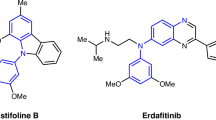
"Here, we report a direct deaminative strategy through the formation of N-nitroamines, allowing the direct conversion of inert aromatic C−N bonds into an array of other functional groups, C−X (C−Br, C−Cl, C−I, C−F, C−N, C−S, C−Se, C−O) and C−C bonds. This operationally simple, general protocol establishes a unified strategy for one-pot deaminative cross-couplings by integrating deaminative functionalization with transition-metal-catalyzed arylation, thereby streamlining synthesis and late-stage functionalization."
"The key advantages of this transformation over other deaminative functionalization methods lies in its versatility across nearly all classes of medicinally relevant heteroaromatic amines, as well as electronically and structurally diverse aniline derivatives, regardless of the position of the amino group. Mechanistic studies, supported by both experimental observations and theoretical analysis, suggest that the aryl cation equivalent reactivity of N-nitroamines is generally favoured in this deaminative process."
A direct deaminative strategy converts inert aromatic C−N bonds into a broad set of C−X (C−Br, C−Cl, C−I, C−F, C−N, C−S, C−Se, C−O) and C−C bonds via formation of N-nitroamines. The protocol enables one-pot deaminative cross-couplings by coupling deaminative functionalization with transition-metal-catalyzed arylation, simplifying synthesis and facilitating late-stage modifications. The method is operationally simple and broadly applicable to nearly all classes of medicinally relevant heteroaromatic amines and diverse aniline derivatives irrespective of amino-group position. Mechanistic evidence and theoretical analysis indicate that an aryl-cation-equivalent reactivity of N-nitroamines drives the transformation, reducing reliance on explosive diazonium chemistry.
#n-nitroamines #deaminative-functionalization #aryl-cn-bond-activation #late-stage-functionalization
Read at Nature
Unable to calculate read time
Collection
[
|
...
]